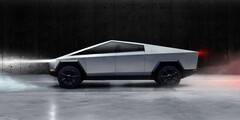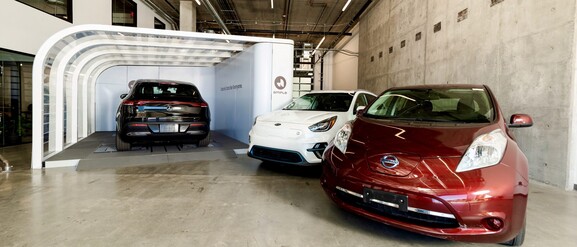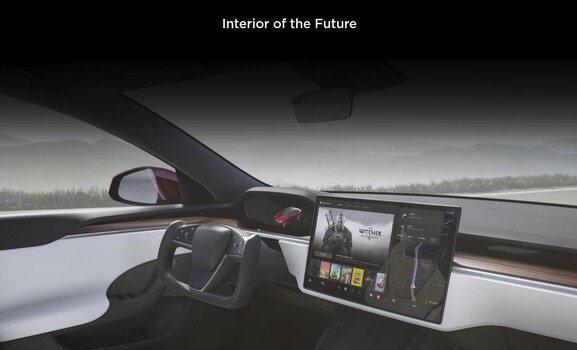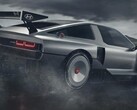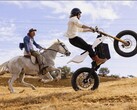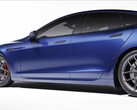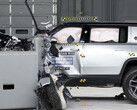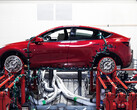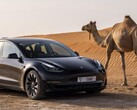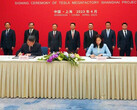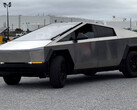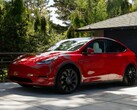1. Between panel gaps and Whompy Wheels, clearly manufacturing is hard
Tesla's manufacturing defects have become a bit of a meme at this point, with many automotive enthusiasts and analysts pointing out that the panel gaps often seen on vehicles like the Model X have no right being so cavernous, given the vehicle's almost US$100,000 price tag.
Manufacturing issues are bound to happen, especially given Tesla's age, but it's a far bigger issue when things start affecting the safety of the drivers. There are a few examples of Tesla's manufacturing problems causing serious safety issues, but two of the worst are the so-called "Whompy Wheel" issue - where poorly-made suspension components failed, allegedly resulting in severe accidents - and the more recent self-detachment of Tesla steering wheels that earned an NHTSA investigation.
Whompy wheels AND brake failure.
— Whompy Wombat (The wombat formerly known as Keef ) (@WhompyWombat) September 5, 2021
**a thread**
There are many examples of Teslas with wheels and suspensions wrenched off.
WHY DOES THIS HAPPEN? pic.twitter.com/ipgEQSUGzu
2. Full Self Driving and Autopilot are not ready yet
Tesla's failure to deliver Full Self Driving has less to do with the actual tech and more to do with the repeated proclamations by CEO Elon Musk that the tech would be arriving "very soon."
Tesla's self-driving technology is very impressive, and the FSD betas that have been released recently even more so, but the tech is still far from ready for the public, as has been demonstrated by the many FSD fail compilations floating around YouTube. Worse still than a few fail compilations are the horrendous accidents that have happened due to errors made by the self-driving systems.
Many detractors have also lamented some of the decisions that have been made surrounding the self-driving hardware in Tesla's vehicles. The removal of radar sensors in favour of a camera-only approach, for example, has been criticised as unsafe, often perceived as a cost-cutting move that puts profit ahead of human lives. It's unclear how Tesla's FSD will play out in the long run, and it's very possible the tech will eventually succeed, but it appears that it will have been a hard-won battle by the end.
3. What happened to swappable Tesla batteries?
Back in 2013, Tesla demonstrated a Model S with swappable batteries and launched a battery swap pilot program, touting the tech as a quick and easy alternative to the hours-long charging time that EVs depended on at the time. Now, 10 years later, manufacturers like NIO, BYD, and CATL have all announced swappable battery tech. Even Fisker has promised to bring swappable batteries to its Ocean SUV by 2024, and yet there has not been a peep from Tesla about battery swapping in years.
Tesla has, instead, opted to build out its network of Superchargers — and rather successfully at that. Interestingly, Tesla's Supercharger strategy might just turn out to be more lucrative in the long run, especially with the network now opening up to more EV brands and potential customers. It's easy to see how there is less overhead and potentially less investment and maintenance involved with a charging network than there is with a network of automated battery swapping robots, even if swappable batteries are a more attractive option for those switching from ICE vehicles.
4. The yoke everyone hated so much that even Tesla gave up on it
To say that the yoke that Tesla sees as the future of driving has turned out poorly is an understatement. When it was introduced, Tesla sold the yoke as standard equipment in the Model S and X, but only a few short months later, the company started offering a round steering wheel as a US$700 option. Now, round is back as the standard, and the yoke has become a US$250 optional extra.
It turns out that an off-centre rectangle makes for a rather poor steering option unless your steering ratios are perfectly designed for that interface choice. If you have to do an excessive amount of hand-over-hand steering, a yoke is just not a great option. This is something that Lexus has actually had a lot more success with than Tesla, as Engineering Explained demonstrates on YouTube.
At the end of the day, Tesla's yoke seems like a half-baked idea that wasn't implemented well enough to make sense, and it's a relief that the round steering wheel has become the default option once more.
Source(s)
Motor Biscuit , Engineering Explained, Business Insider, Tesla (1, 2, 3), ArenaEVs, Ample




